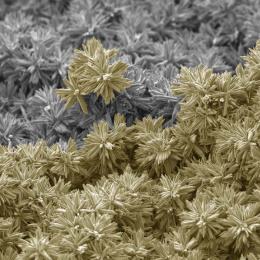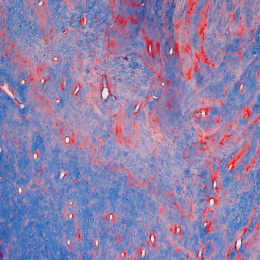In Robotico Model of Nanoparticle Tissue Penetration, Image C
In Robotico Model of Nanoparticle Tissue Penetration, Image C
Submitted by Sangeeta Bhatia, Radhika Nagpal, Sabine Hauert, and Michael Rubenstein of the Koch Institute
Koch Institute at MIT, Institute of Medical Engineering and Science
Sangeeta Bhatia, Radhika Nagpal, Sabine Hauert, and Michael Rubenstein
Laboratory for Multiscale Regenerative Technologies, Koch Institute
"Understanding how nanoparticles distribute in cancer tissue is important to predict if they will be able to reach and treat all tumor cells. Because nanoparticles are difficult to visualize, we use robots as a way to model and brainstorm about the dynamics involved. In this image, nanoparticle-robots shown in green leave a virtual vessel to diffuse through tissue and bind to cell-robots (red) using wireless communication. Nanoparticle-robots can then unbind or internalize in the cell (purple) where they deliver their treatment.
Kilobot robots developed by the Wyss Institute at Harvard were programmed as either nanoparticles-robots or cell-robots. Cell-robots were manually placed inside the virtual tissue and nanoparticle-robots were placed in a virtual vessel on the right side of the image. All robots were then activated and left to run fully autonomously. These images were taken four minutes after the beginning of the experiment."






